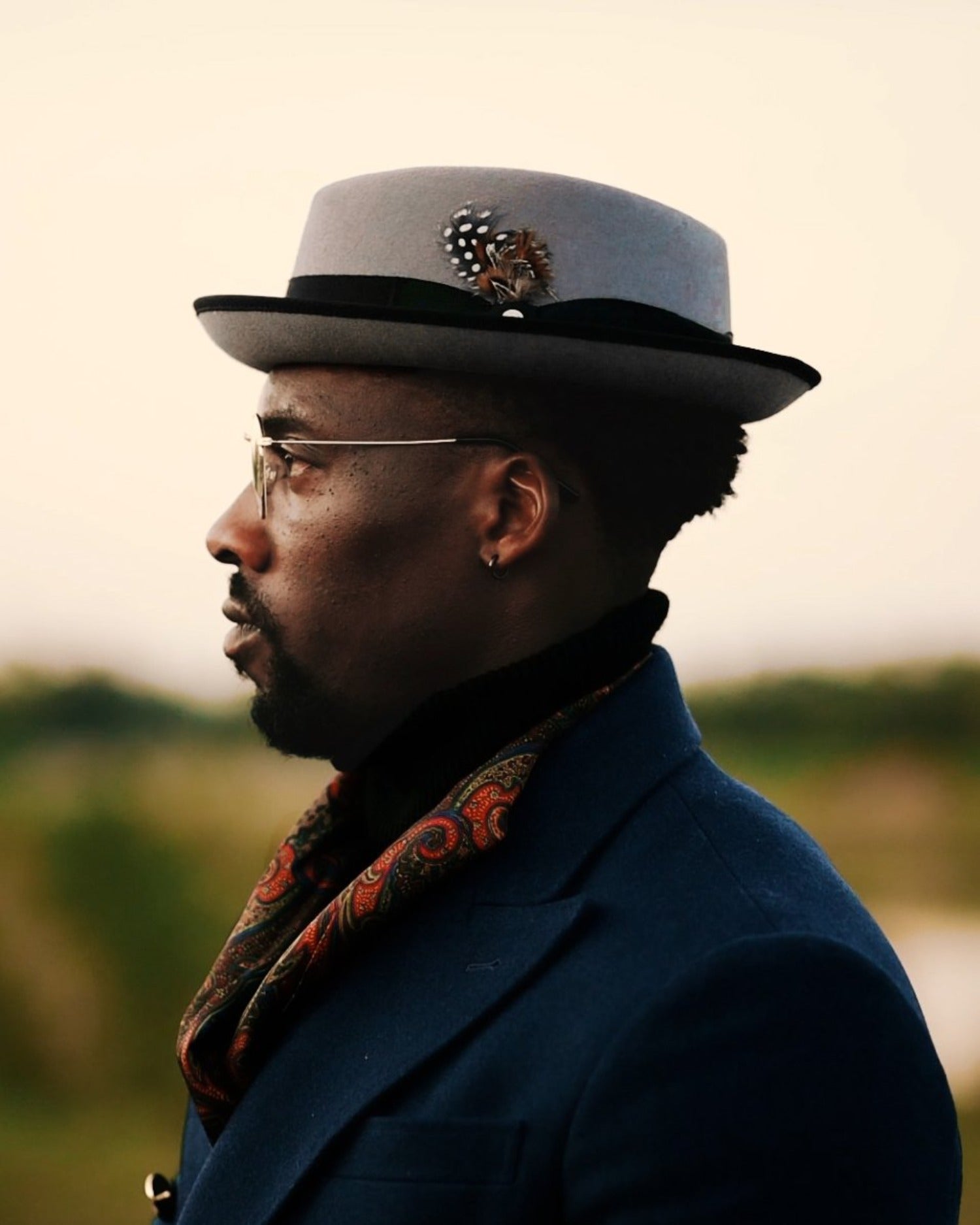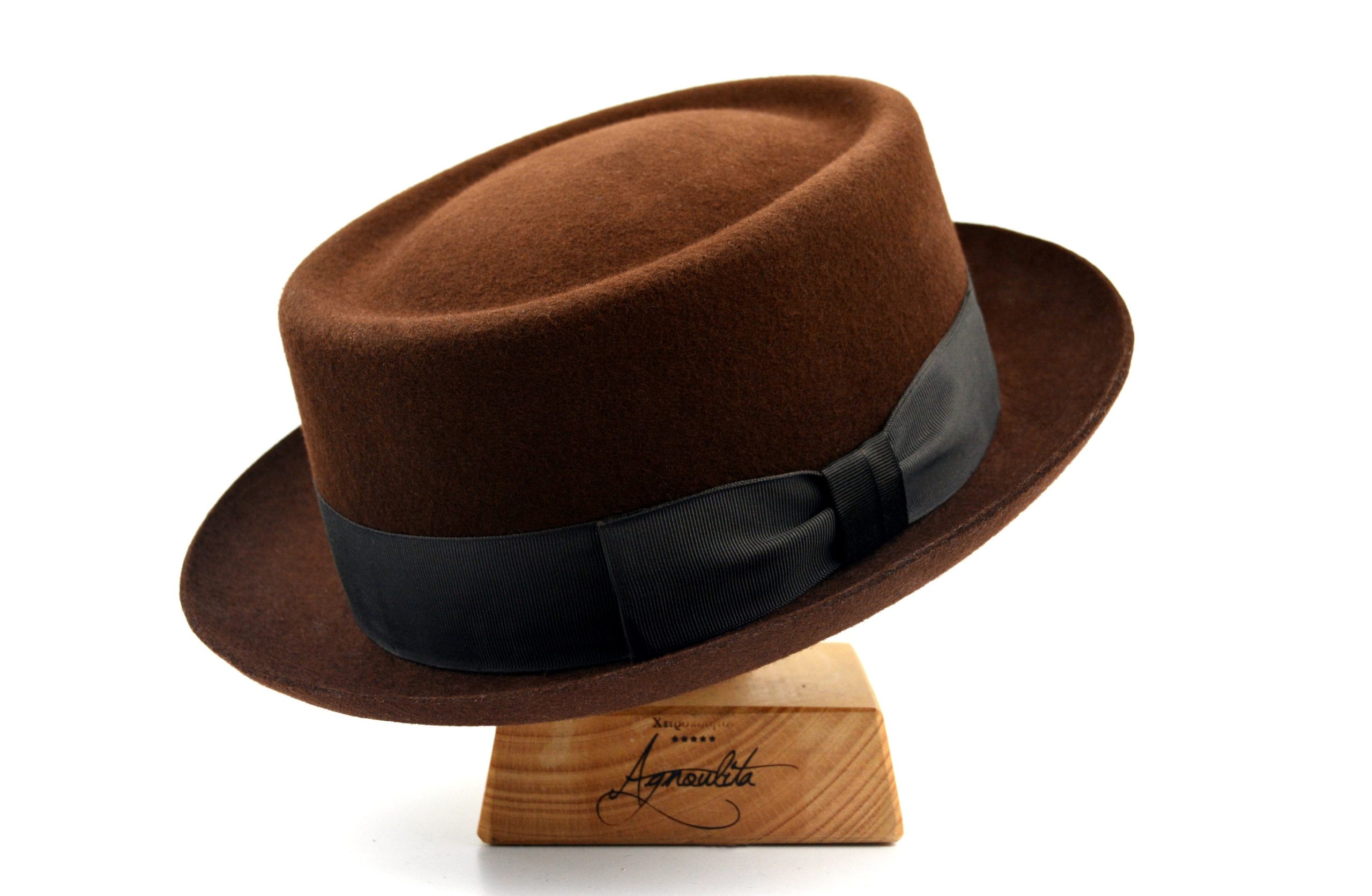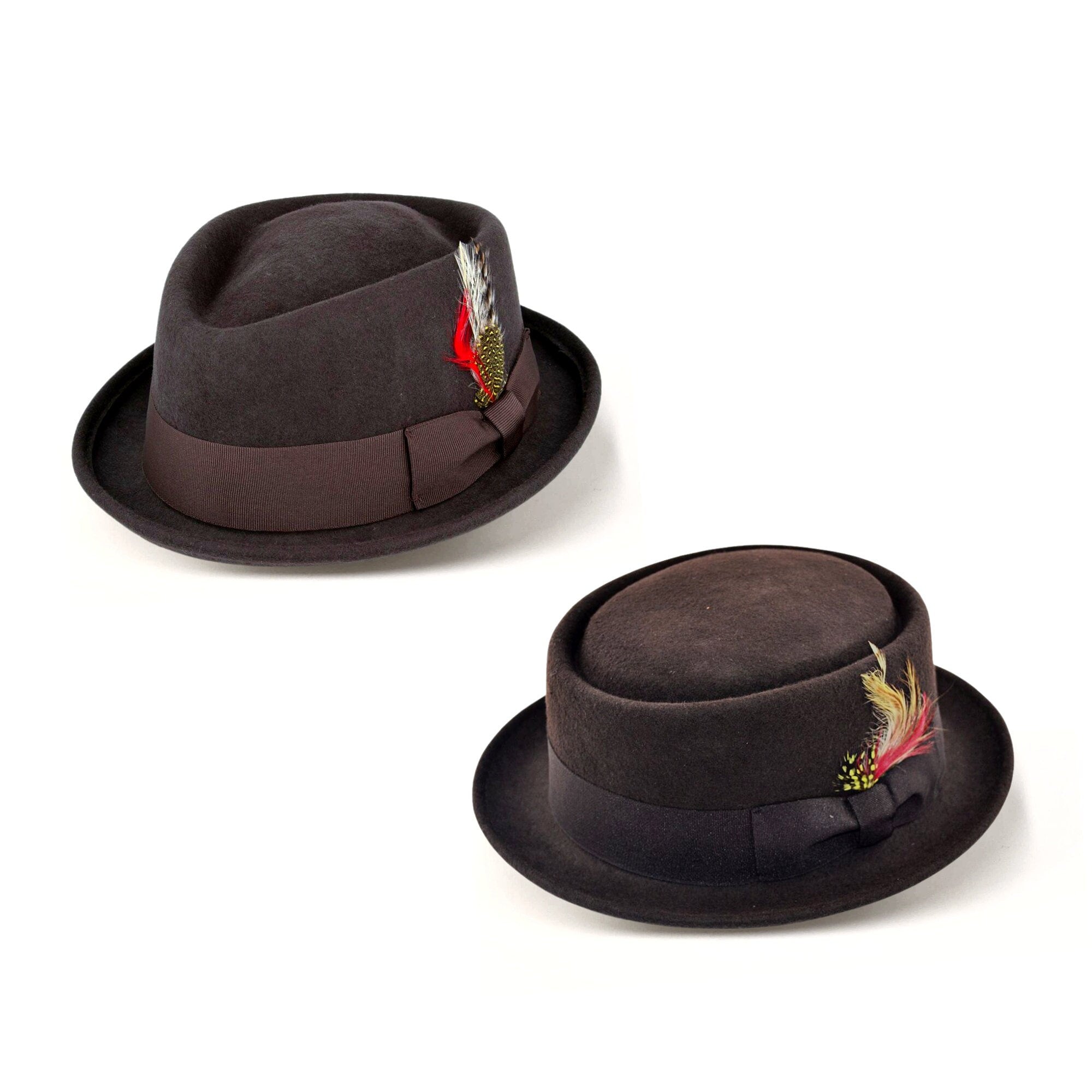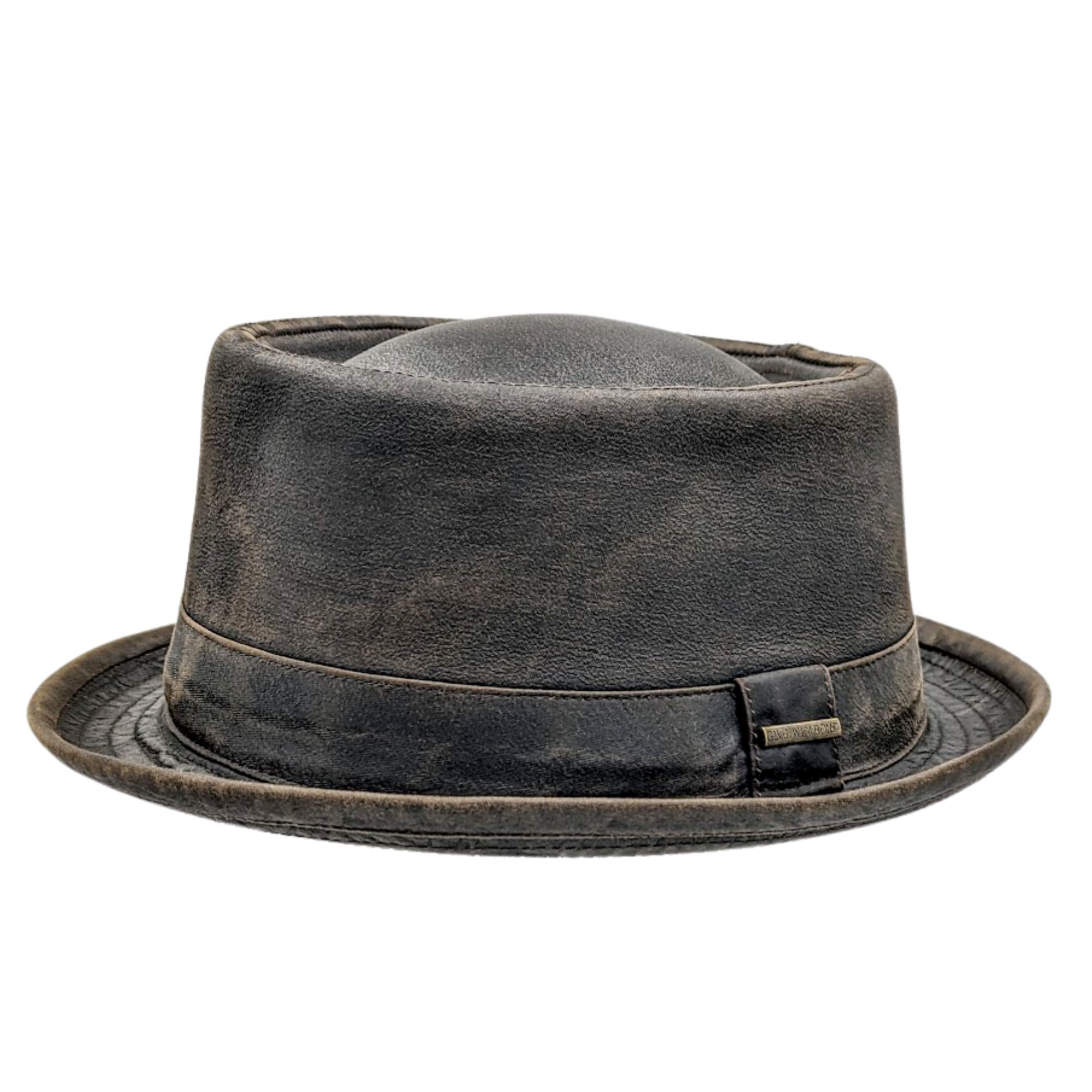Introduction
Pork pie hats, with their distinctive shallow domed crown and narrow, upturned brim, have etched an indelible mark on the landscape of fashion and cultural symbolism. From their humble origins in the early 19th century to becoming a staple of various subcultures and iconic film characters, these hats embody a timeless elegance that transcends trends and generations.

Origins and Evolution
The pork pie hat, named for its resemblance to the British meat pie of the same name, first appeared around the 1830s as a gentleman’s hat, typically worn for casual or sporting events. Its design featured a small, round crown without a crease, topped with a flat disc, and a short, curled brim. Initially crafted from felt, these hats were simple yet sophisticated, reflecting the sartorial sensibilities of the Victorian era.
By the early 20th century, the pork pie hat had evolved into a symbol of working-class style, particularly among jazz musicians and blues artists in America. Legends like Lester Young popularized the hat, which became synonymous with the laid-back cool of the jazz scene. This association further solidified during the Swing Era, where it was a favorite among zoot suit-wearing hep cats.
Cultural Icons and Pop Culture
No discussion of pork pie hats would be complete without mentioning their role in defining some of the most memorable characters in cinema and television. Perhaps the most iconic is the character of Inspector Clouseau, played by Peter Sellers in “The Pink Panther” series, whose bumbling antics were accentuated by his signature pork pie hat. More recently, the hat became inseparable from the enigmatic persona of Walter White (Bryan Cranston) in “Breaking Bad,” symbolizing his transformation from meek chemistry teacher to ruthless drug lord.
In music, the pork pie hat retained its status as a symbol of rebellion and individuality. British ska and Two-Tone bands of the late 1970s and 80s, such as The Specials and Madness, adopted the hat as part of their uniform, further embedding it into youth culture and anti-establishment movements.
Modern Revival and Versatility
Despite their deep roots in history, pork pie hats continue to enjoy a resurgence in contemporary fashion. Designers and milliners are reimagining the classic silhouette with new materials, colors, and patterns, making it a versatile accessory suitable for both formal and casual attire. From tweed and wool for winter to linen and straw for summer, modern pork pie hats cater to diverse tastes and seasons.
Celebrities and influencers spotted donning pork pie hats at events and in street style photos have contributed to their renewed popularity, demonstrating that this vintage accessory can add a touch of retro charm to any outfit. Its ability to blend seamlessly with both classic and avant-garde styles underscores its timeless appeal.
A Cultural Emblem of Self-Expression
Beyond mere fashion, the pork pie hat represents a statement of personal style and individuality. It is a hat that says, “I know my history, but I’m making it my own.” Wearers often embrace the hat as a badge of honor, signaling an appreciation for tradition while asserting a unique and often non-conformist identity.

The Influence on Subcultures and Counterculture
One of the most intriguing aspects of the pork pie hat’s legacy lies in its adoption and adaptation by various subcultures throughout the decades. Beyond its association with jazz and the blues, the hat has been claimed and reinterpreted by groups that use fashion as a means of expressing their identity and social commentary.
During the Mod movement of the 1960s in the UK, pork pie hats were favored by young men and women who embraced a sharp, tailored look inspired by Italian and French fashion. Mods often wore them tilted slightly forward, giving off an air of nonchalant cool that matched their love for Vespa scooters and all-night dance parties.
In the late 1970s and early 1980s, the Two-Tone ska revival brought a new wave of pork pie enthusiasts. Bands like The Specials and Madness not only incorporated the hats into their stage attire but also into the visual identity of the movement. The Two-Tone style, which mixed elements of mod, rude boy, and punk fashion, used the pork pie hat as a unifying symbol against racial tensions and social divides, promoting unity and celebration of diversity through music and style.
Gender and the Pork Pie Hat
Traditionally associated with male fashion, the pork pie hat has seen a gradual shift in its gender dynamics over time. As fashion evolves to become more inclusive and fluid, women too have embraced this classic hat style, adding a fresh dimension to its aesthetic. From fashion-forward celebrities to everyday individuals, women are incorporating pork pie hats into their wardrobes, often pairing them with modern or vintage-inspired outfits to create unique looks that challenge traditional gender norms in fashion.
The Artisanal Renaissance
In recent years, there has been a resurgence of interest in artisanal craftsmanship and bespoke fashion. This trend has breathed new life into the pork pie hat, with hat makers and milliners dedicating themselves to preserving and perfecting the art of creating these hats by hand. Using high-quality materials and techniques passed down through generations, these artisans ensure that each hat is not just an accessory but a wearable work of art, tailored to the wearer’s specifications.
This focus on craftsmanship not only celebrates the heritage of the pork pie hat but also contributes to sustainability efforts in fashion. By investing in well-made, long-lasting pieces, consumers are encouraged to move away from fast fashion cycles and toward more thoughtful purchasing decisions.

The Influence on Subcultures and Counterculture
One of the most intriguing aspects of the pork pie hat’s legacy lies in its adoption and adaptation by various subcultures throughout the decades. Beyond its association with jazz and blues, the hat has been claimed and reinterpreted by groups that sought to define themselves against mainstream norms, further enriching its cultural significance.
Mod Culture and the Two-Tone Movement
During the 1960s, the Mod subculture in the UK embraced the pork pie hat as part of their sharp, tailored look. Mods, known for their love of music, fashion, and scooters, saw the hat as a way to exude style and distinction. The hat’s compact shape and clean lines resonated with Mod aesthetics, which emphasized precision and modernity.
In the late 1970s and early 80s, the Two-Tone ska revival emerged, drawing heavily from both the Mod and Jamaican rude boy cultures. Bands like The Specials and Madness not only revived the ska sound but also brought back the pork pie hat as a visual hallmark of the movement. The hat became a unifying symbol, representing a fusion of styles and a shared spirit of social commentary and anti-racism.

In conclusion
Pork pie hats stand as a testament to the enduring power of classic design. From their origins in Victorian Britain to their starring roles in modern pop culture, they have remained a symbol of cool, sophistication, and cultural significance. Whether topping the heads of jazz legends, movie icons, or everyday individuals seeking to express their sartorial flair, pork pie hats continue to weave a fascinating narrative through the annals of history and culture.

